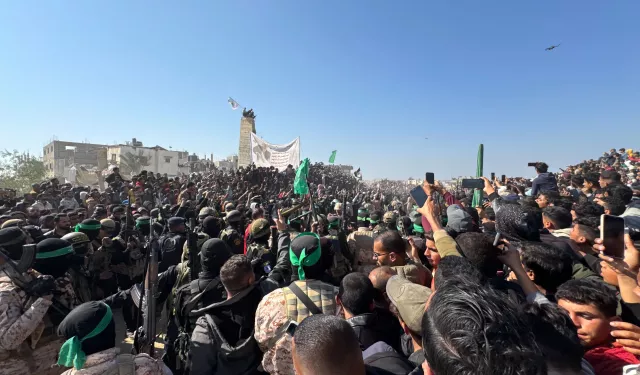Two senior Hamas sources familiar with the latest round of Cairo negotiations have confirmed that Egyptian mediators introduced key amendments to the ceasefire proposal originally advanced by US Middle East envoy Steve Witkoff.
The modifications, the sources told Al Manassa, brought the framework significantly closer to Hamas’ long-standing demands—particularly regarding Israeli withdrawal lines and the number of Palestinian detainees covered by the agreement.
Hamas formally accepted the revised proposal on Sunday. The plan, jointly presented by Egypt and Qatar, envisions a 60-day ceasefire in Gaza.
According to Taher Al-Nunu, media adviser to the head of Hamas’s political bureau, the deal includes no requirement for disarmament of Palestinian resistance factions—an issue that has consistently remained a red line for the movement.
A senior Hamas official told Al Manassa that one of the most substantial changes involved the depth of the proposed buffer zone within residential areas. Israel had previously pushed for a 1,500-meter zone, yet Egyptian negotiators reportedly reduced this to 800 meters, approaching Hamas’s original counterproposal of 600 meters.
Additionally, the proposal stipulates an Israeli withdrawal from both the Morag axis and the city of Rafah in southern Gaza. However, it allows Israeli forces to remain within a depth of 1,800 meters along the Gaza-Egypt border—a position seen as strategically vital by the Israeli military.
The official, speaking on condition of anonymity, said that Israel remains reluctant to relinquish control of zones where local armed factions allied with its forces operate. These groups, the source added, play a role in facilitating Israel’s broader displacement agenda. He pointed specifically to Israeli Prime Minister Benjamin Netanyahu’s refusal to withdraw from the Morag Corridor —an area fortified following Israel’s unilateral exit from a previous ceasefire framework in March.
“The occupation seeks to retain control of areas where Yasser Abu Shabab’s militia elements operate in coordination with Israeli forces,” the source said, referring to a controversial local faction. “This is about ensuring their protection and maintaining momentum for population transfers within the Strip.”
The revised plan reportedly increases the number of Palestinian detainees to be released to 1,700—up from Israel’s initial offer of 1,000. The list now includes 1,500 individuals from Gaza, many of whom were detained during the ground invasion, and 200 prisoners serving life or long-term sentences.
While Hamas initially requested the release of 300 prisoners serving life terms, the group ultimately accepted the Egyptian compromise. In return, it agreed to drop demands for the release of Qassam Brigade fighters, in exchange for increasing the overall number of Gaza detainees included in the deal.
A second Hamas source, also requesting anonymity, said the amended proposal includes the expansion of daily aid truck entries into Gaza from 500 to 600, along with the unrestricted delivery of shelter materials and tents. There are reportedly no limitations on where such aid can be deployed within the enclave.
Although the updated framework relaxes provisions for guaranteeing the resumption of post-ceasefire negotiations, Hamas agreed to the terms in what it described as a humanitarian gesture.
“We accepted this to alleviate our people’s suffering in Gaza,” the source said, adding that the issue of guarantees would be managed by the mediating parties.
Qatari Foreign Ministry spokesman Majed Al-Ansari confirmed during a press briefing Monday that Hamas’ positive response was broadly aligned with terms Israel had previously accepted.
He emphasized that the proposal contains “a pathway to a comprehensive agreement to end the war,” and called it “the best available option to halt Palestinian bloodshed.”
Al-Ansari warned of catastrophic consequences should the ceasefire fail to materialize. “We are facing a critical humanitarian moment,” he said. “If an agreement is not reached now, we may witness an unprecedented human disaster.”
Despite ongoing mediation efforts, Israel has yet to formally respond. Its previous rejection in March of the second phase of a January ceasefire led to the resumption of full-scale military operations.
Mediators from Egypt, Qatar, and the United States continue to seek a sustainable resolution, but a comprehensive ceasefire remains elusive.
As conditions inside Gaza deteriorate further, the revised Egyptian-Qatari plan now serves as the most viable route toward a temporary cessation of hostilities—and potentially, a stepping stone toward a broader postwar framework.
